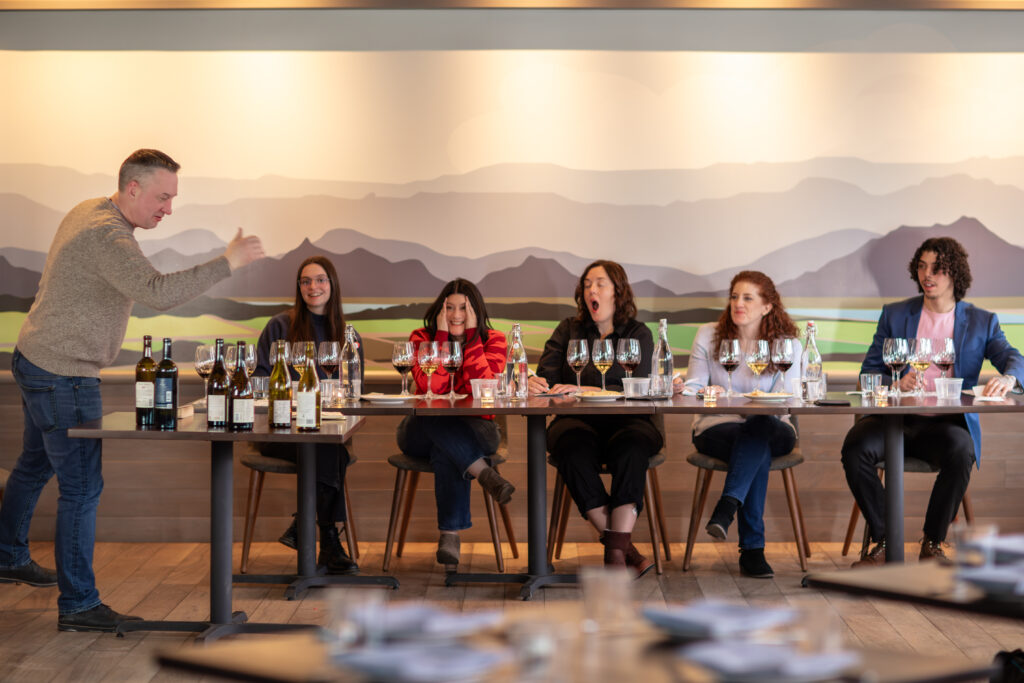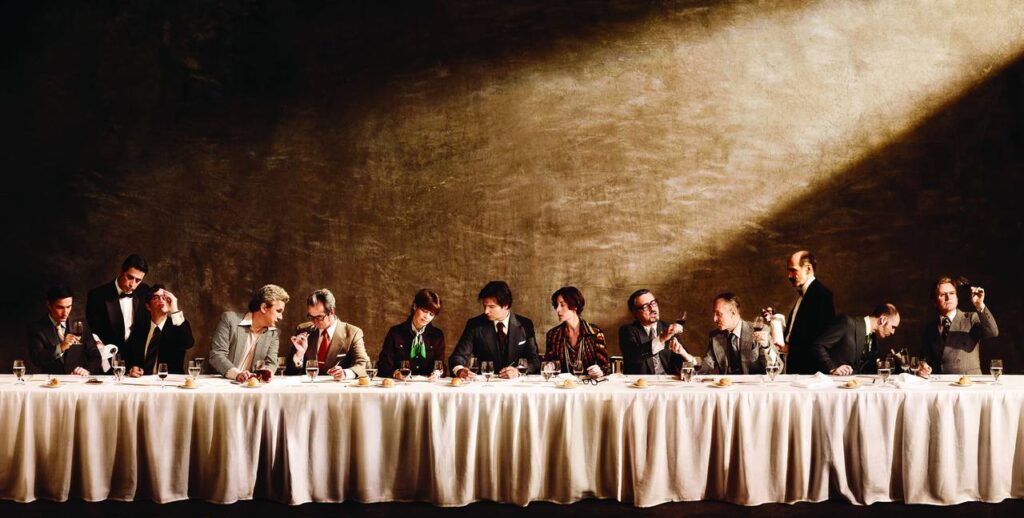‘The cork pulled ’round the world’


Have you heard about the Judgement of Paris? May 24 marks the forty-eighth anniversary of this historic event, the Paris Wine Tasting of 1976. For hundreds of years, France was the country that was undeniably on top of the world of wine . . . until the outcome of that tasting, one which would flip the world of wine upside down.
Miller: I first learned of the Judgement of Paris (TJOP) when Sharra suggested watching the movie Bottle Shock. Inspired by true events, the film uses creative license to tell the story of TJOP with a cast that includes Chris Pine, Bill Pullman, and Allen Rickman as Steven Spurrier.
Sharra: To give a little background, the French viewed any wine from outside of their own country to be inferior. They had been making wine for centuries and handed down wine making knowledge and techniques for generations through their own families. As wine production had been happening in California for only a short period of time, the devastating effects of prohibition had caused most wineries to close or fall into various states of disrepair. For decades, the grapes being grown were mostly used for bulk wine production, and the Napa Valley struggled to find its identity. However, in the early 1960s the philosophy began to change as a new wave of producers led by Robert Mondavi envisioned producing wines that would rival the best of what the French had to offer.
M: Back across the pond in 1973 France, Steven Spurrier, an English wine merchant who lived in Paris, devised a plan with his American employee Patricia Gallagher. Their idea was to hold a tasting competition featuring some of France’s best wines with a selection of producers from the Napa Valley in California that they continued to hear more and more about. From this, “The Judgement of Paris” was born.
S: The event would take place in Paris and commemorate the American Bicentennial Celebration. Red wines from Bordeaux (Cabernet Sauvignon blends) and white wines from Burgundy (French Chardonnay) would be matched against their counterparts from California. Because the French viewed any wine from outside of their own country to be inferior, in the order of fairness, the tasting would be held blind.
M: Finally, the day had come. Nine judges comprised a who’s who of the French wine industry collected for the event that featured six California wines versus four French wines in each category. To their shock and disbelief, the winning wines were from California, the 1973 Chardonnay from Chateau Montelena and the 1973 Cabernet Sauvignon from Stag’s Leap Wine Cellars. George Taber, who went on to write a book about the event, was the only journalist on the scene, covering the story for TIME magazine, and it spread like wildfire.
S: There have been several official recreations of TJOP that mostly ended with similar results. Adena and I thought it would be fun to host our own recreation of the event but with our own spin. We decided to invite a panel of tasters that love wine but aren’t necessarily the standard “wine expert.” I called on friends in the wine industry to help select wines that would represent French and California Cabernet, Chardonnay, and the addition of Pinot Noir.
M: When it was time for us to host our Judgement, REDD Rochester was gracious to allow us to use their space as our backdrop. We asked someone outside of the panel to wrap and number the bottles to ensure there wasn’t any advance knowledge of what was being poured in each glass. To keep things lighthearted but still with a bit of sophistication, we found tasting placemats and corresponding tasting cards that had a playful tone. As our guests filtered in, excitement started to brew as they took in the scene. The table was set with Jeff pouring wines from wrapped bottles, giving them a glimpse into what their task ahead would be. Introductions were made and everyone found a seat around the table as Jeff proceeded to give an overview of TJOP along with the goals and format of our tasting.
S: I offered advice on how the group should go through the pairings, starting with the Chardonnay, followed by the Pinot, and then the Cabernet. I encouraged them to talk through the wines with each other and to have their tasting cards guide them through the wines based on aroma, appearance, taste, finish, and overall rating.
M: It was only a minute or two after being set loose with all the wines in front of us that we realized we should have asked more questions. One person was busy smelling each wine in number order, while another started describing the taste. Very quickly, our panel of novice tasters suddenly started sounding like sommeliers. It was a very chaotic start to the tasting, and I asked the group if we could slow down and discuss each wine together.
S: It was great watching our tasters do something that most of them have never done before. Each of them having so much fun sharing their thoughts and slowly coming up with their individual assessment of the wines.
M: Soon enough it was time to tally the scores and find the results. Our scoring format allowed each wine a maximum of twenty-five points, and after Jeff collected the scores from our tasting panel and added up the totals, it was the moment of our big reveal.
S: Of the six wines we tasted, there were a couple of standouts, but unlike the original TJOP, the top wines in each category were mixed between the French and California wines. The wine with the lowest point total was the Grgich Hills Chardonnay, followed by Mossback Pinot Noir, both from California. In a tie for third place was Chateau de Pez Bordeaux with Joseph Drouhin Bourgogne, the French Cabernet and Pinot Noir.
M: Now, for our final judgement. Would the French Chardonnay or the California Cabernet come out on top? As the last two bottles were revealed, the wine with the second-highest point total was . . . Domaine de la Jobeline, the French Chardonnay. Our winner . . . Beaulieu Vineyard Cabernet Sauvignon from the Napa Valley!
With our results being mixed across the board, it just goes to show that most consumers are going to drink what they like; it doesn’t matter where it comes from, just that they enjoy it.
S: The Judgement of Paris proved to be a monumental event not only because the American wines bested the French, but it also created a ripple effect that was felt around the globe. European, South African, Latin American, and Australian wine makers began to realize that their wines could also have a seat at the table. The judgement poured across America, as burgeoning wine regions like the Willamette Valley in Oregon and even in our own backyard, the Finger Lakes, took note, and all produce incredible, world class wines today.
When informed of the outcome of the tasting, Jim Barrett, one of the principal owners of Chateau Montelena famously quipped, “Not bad for kids from the sticks.” Not bad, Jim, not bad at all.
Views: 8




